Tom's Hardware Verdict
If you're willing to overlook a less-than-stellar cable, you'd be hard-pressed to find a better entry-level gaming mouse than the SteelSeries Rival 3.
Pros
- +
Low price
- +
Solid performance
- +
Distinctive RGB lighting
Cons
- -
Non-braided USB cables can be frustrating
Why you can trust Tom's Hardware
SteelSeries newest entry-level gaming mouse only costs $30, which is roughly half of what many people would expect to spend on a gaming mouse. That low price comes with RGB, acceptable performance with gaming as well as productivity and fewer limitations that you might expect.
But if you find cable drag annoying or are seeking the best gaming mouse around, this budget peripheral won’t be enough.
SteelSeries Rival 3 Specs
| Sensor Type | Optical | Row 0 - Cell 2 |
| Sensor Model | SteelSeries TrueMove Core | Row 1 - Cell 2 |
| Sensitivity | 100-8,500 CPI | Row 2 - Cell 2 |
| Polling Rates | Up to 1,000Hz (1ms) | Row 3 - Cell 2 |
| Programmable Buttons | 6 | Row 4 - Cell 2 |
| LED Zones and Colors | 3 RGB zones | Row 5 - Cell 2 |
| Cable Length | 6 feet (1.8m) | Row 6 - Cell 2 |
| Measurements (LxWxH) | 4.75 x 2.3-2.64 x 0.85-1.49 inches (120.7 x 58.4- 67.1 x 21.6-37.8mm) | Row 7 - Cell 2 |
| Weight (without cable) | 2.7 ounces (77g) | Row 8 - Cell 2 |
Design and Comfort

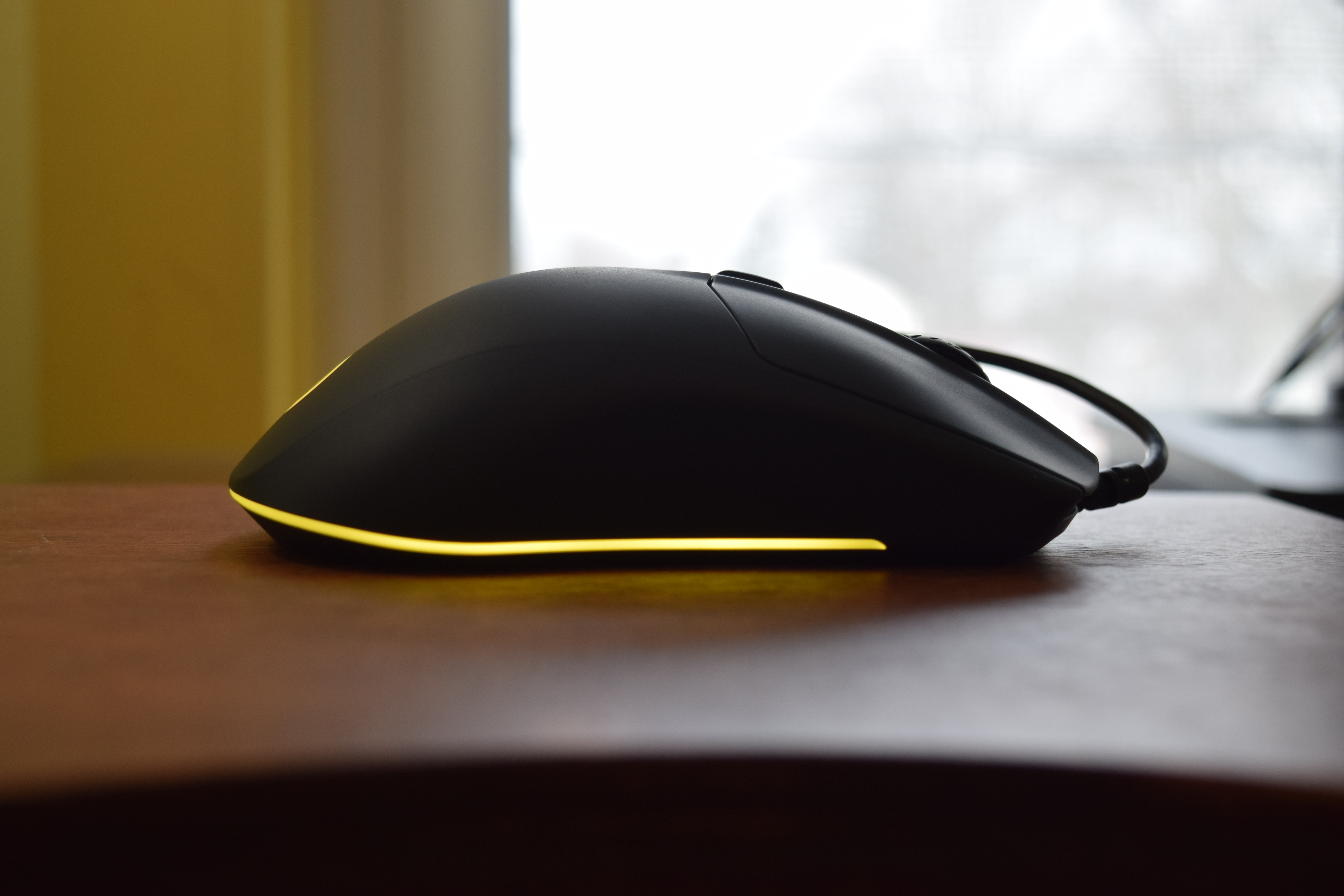
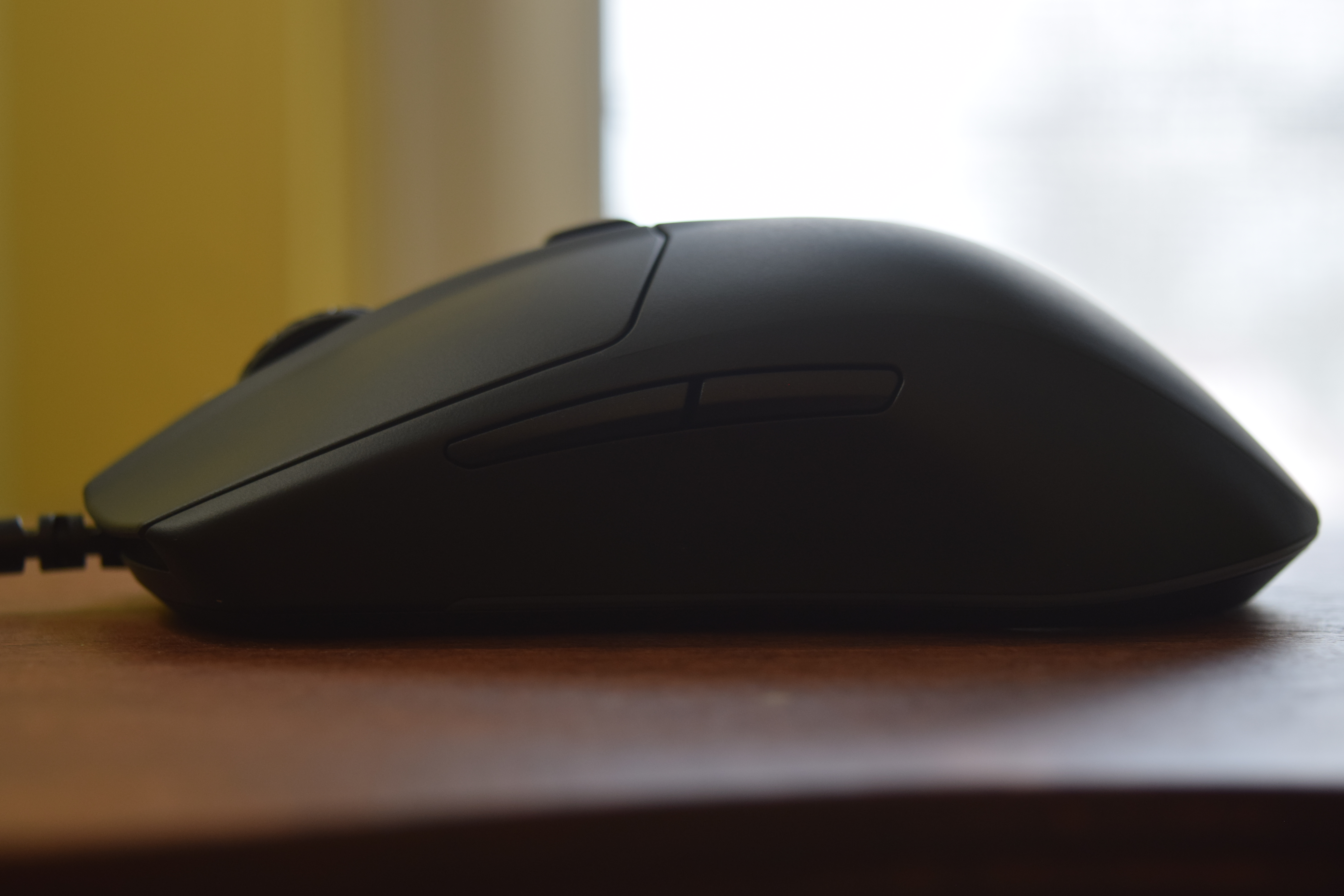
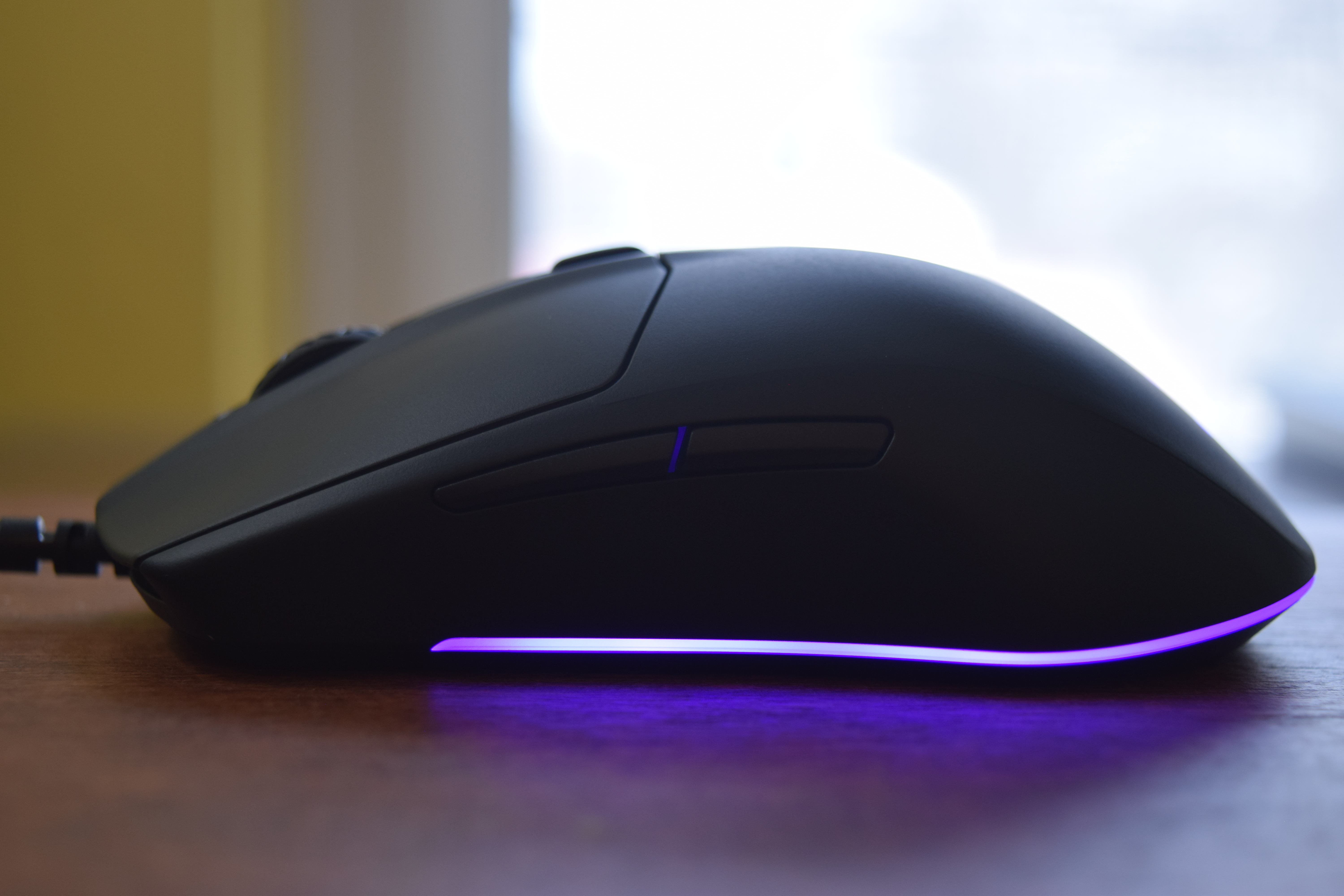
The Rival 3 looks a lot like the SteelSeries Sensei Ten released in late 2019. There are some important differences--especially the Rival 3's lack of side buttons on its right casing--but it would be easy to tell they were made by the same company even if they didn't feature the SteelSeries logo. Basically, the Rival 3 looks like a smaller take on the Sensei Ten.
The Rival 3 measures 4.75 inches long, 2.3 inches wide in the front, 2.64 inches wide in the back and is 0.85 inches tall in the front and 1.49 inches tall in the back. It weighs 2.7 ounces, and if it were any smaller, it would feel like a toy.
SteelSeries equipped the Rival 3 with six buttons: the left mouse button, right mouse button, two side buttons, a scroll click button and a DPI switch. That should be plenty for most people, especially since the buttons are customizable via the SteelSeries Engine 3 software available for Windows and macOS (more about customization in a bit).
The Rival 3 features three-zone RGB lighting (customizable via SteelSeries Engine 3) on the strip running along the bottom, meaning you can program each section to shine a different color or effect. The illuminated SteelSeries logo will match the bottom zone. Surprisingly, the mouse doesn't feature any lighting for the scroll wheel, which is common. However, you can see the RGB in the itty-bitty gap between the side buttons. Besides the RGB lighting, the Rival 3's chassis is unremarkable. And that's fine by me.
All of these features live in a dull, matte case with slight texturing for an improved grip. I like that the Rival 3's case isn't as textured as other gaming mice, such as like with the sides of the Razer DeathAdder V2. However, particularly sweaty gamers might benefit from the additional traction found in mice like the DeathAdder V2.
Get Tom's Hardware's best news and in-depth reviews, straight to your inbox.
The Rival 3 is light enough to use for extended periods but not so light that it's easy to accidentally fling it across your mouse pad. The mouse fit my smaller hand well (more so than the DeathAdder V2), and my palm grip always felt good. Unlike the DeathAdder V2's sandpaper-like side texture, the Rival 3's casing didn’t irritate me during longer gaming sessions.
Gaming Performance
SteelSeries built the Rival 3 around its TrueMove Core sensor, which supports CPI settings between 100 and 8,500 in 100 CPI increments. That pales in comparison to higher-end mice; Razer's Focus+ optical sensor supports up to 20,000 CPI. Most people don't need that large a range, however, and it's not surprising for an entry-level mouse to have a sensor like this.
I enjoyed using the Rival 3 in my usual rotation of first-person shooters (Call of Duty: Modern Warfare, Apex Legends and Overwatch) and didn’t experience any tracking-related issues with the CPI set to 1,600 or 2,000. Swapping between those settings in the heat of the moment is slightly difficult, thanks to the small DPI switch, but doable.
The Rival 3 feels responsive, thanks to its standard 1,000 Hz polling rate, and I didn’t notice any hardware-related input lag in any of the games I've played.
Despite its small frame, the Rival 3 also felt solid when I played those games. Now, it’s not so tough that it could take me taking my gaming frustrations out on it. But when it came to everyday use, I never felt like I was about to break something. That shouldn't be too much of a risk, since SteelSeries said the mouse buttons' mechanical switches are rated for 60 million clicks.
I have but one complaint about the Rival 3: its cable. SteelSeries used a 6-foot-long rubber USB cable for the Rival 3. Saying this feels like a downgrade compared to braided cables found in mice like the aforementioned Sensei Ten and DeathAdder V2 would be an understatement. Since the cable wasn’t braided, I found myself struggling with drag pretty often. This isn’t a dealbreaker, and the problem could be solved with a cheap mouse bungee, but that defeats the purpose of a $30 mouse.
Features and Software
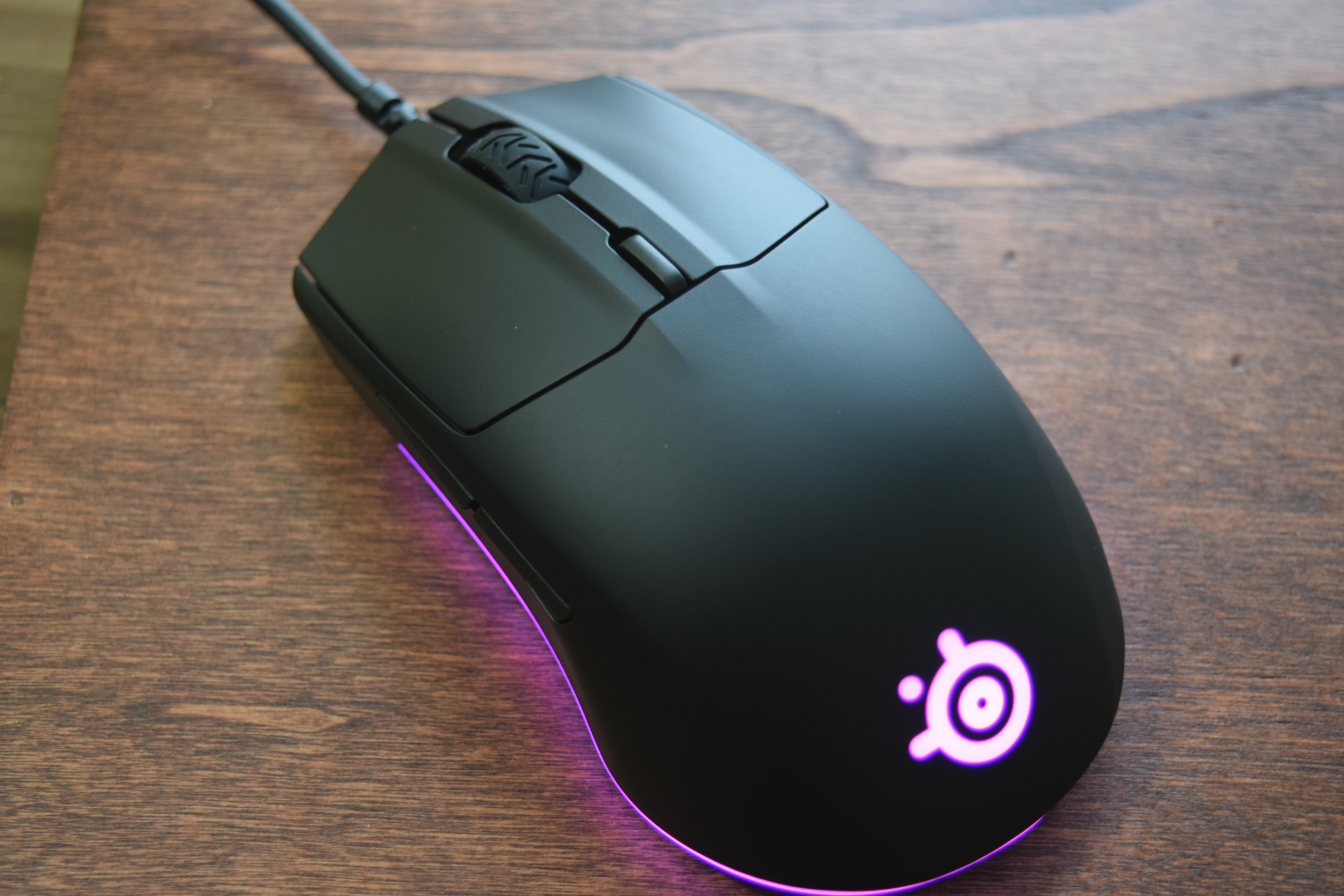
The free SteelSeries Engine 3 software offers all the usual features. It can set CPI settings, change the polling rate, control motion smoothing and assign different functions to each mouse button, all in a graphics-heavy interface that makes it clear exactly what each setting will affect if you change it.
Most users will primarily use SteelSeries Engine 3 to control the Rival 3's lighting. The mouse offers three-zone RGB lighting that you can independently control. I was a bit surprised when I discovered this; I expected to only be able to control the strip along the bottom of the case and the logo. Instead, the Rival 3's bottom strip has three different zones.
SteelSeries Engine 3 offers a few lighting settings to choose from: Steady, ColorShift and Multi Color Breathe. Because the zones are independently controlled, one could theoretically choose between three different effects with many different colors, although I think that might be too gauche for even the flashiest RGB enthusiast. (And if you disagree, hey, it's your mouse! Light it up however you want.)
You can also use the app to update the Rival 3's firmware. Just be careful not to close SteelSeries Engine 3, disconnect the mouse or turn off your PC during that update process. SteelSeries warns that doing so can render the mouse inoperable, and while it would be cheaper to replace than most gaming mice, I doubt anyone wants to pay for a little mistake.
Bottom Line
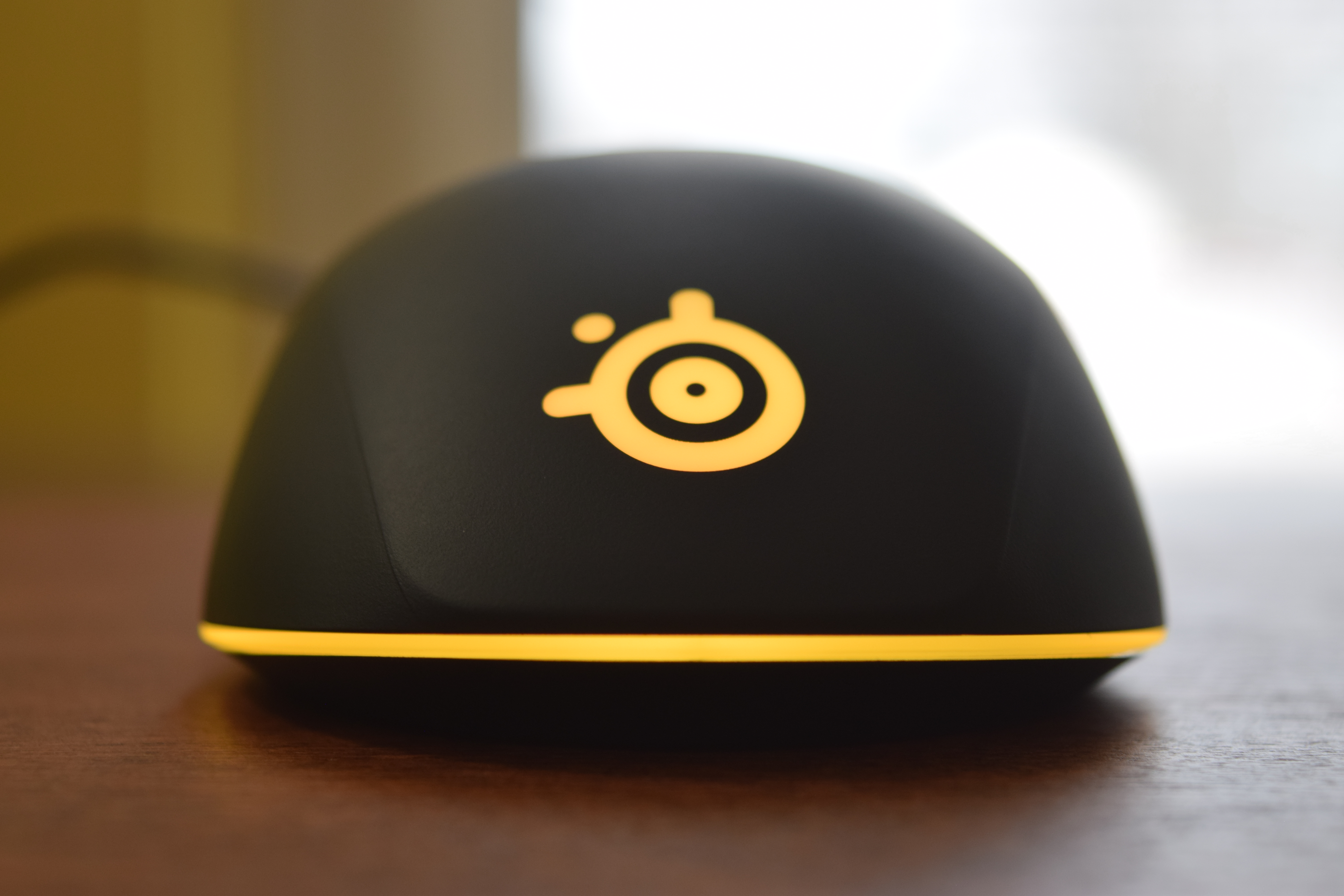
It's hard to believe the SteelSeries Rival 3 only costs $30. Is it the most solidly built gaming mouse on the market? No. It's not the most customizable mouse, either, nor the best performing. Anyone who's looking for the best of the best shouldn't waste a second glance on the Rival 3.
For everyone else, however, it's easy to recommend the Rival 3. It performs well despite having a limited CPI range, offers some customization options via SteelSeries Engine 3 and has attractive RGB lighting that would be hard to find on similarly priced gaming mice. It’s also comfortable to use.
My only wish would be for SteelSeries to ditch the RGB lighting and include a braided cable instead. Yes, that would make the Rival 3 look less distinctive, but it would also improve in-game performance.
Still, even with a less-than-stellar cable the Rival 3 offers a lot of bang for your buck.
MORE: Best Gaming Mice
MORE: Gaming Mice Reviews

Nathaniel Mott is a freelance news and features writer for Tom's Hardware US, covering breaking news, security, and the silliest aspects of the tech industry.
-
realarchfrog I actually owned this mouse. And the reviewer did not discover that the rubber sides are GLUED onto the mouse meaning that they will eventually fall off if you use the mouse for extended gaming sessions. I cannot recommend this mouse. Go for a quality mouse without glued components instead.Reply -
fopps Reply
You are mistaken, this is the rival 3 which was just released. You are thinking of the rival 300/310. I made an account just to correct you because this is actually a quality mouse with NO glued side grips.realarchfrog said:I actually owned this mouse. And the reviewer did not discover that the rubber sides are GLUED onto the mouse meaning that they will eventually fall off if you use the mouse for extended gaming sessions. I cannot recommend this mouse. Go for a quality mouse without glued components instead.